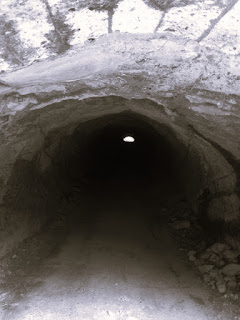The hermitage is located with Mt. Kinubari on its back and is protected by an orderly hedge. The wood grain of the entrance, which is lit by the bonfire, has been polished to oxidized silver over the years, and the copper plate covering the eaves has turned greenish blue due to salty wind and rain. The guide pulls the door with a low head, followed by a slow step, brushing off the fine cloth, and ascending the steps to the door. As he get closer, his profile appears in the light of the bonfire. Minamoto no Yoritomo, the great shogun who conquered the barbarians.
The hermitage is already warm and incense is burning. He take off his shoes, go up the stile, and enter through blindfold cloth that hangs so that noone can see the back room. The small flame of the candlestick reflected the silhouette of one person on the wooden wall, but another silhouette appeared and eventually overlapped.
From the seat of Okura Shogunate Yoritomo, which borders Tsurugaoka Hachimangu Shrine, he can see the mountains up close. In the summer, Yoritomo spread a white cloth over the top of the mountain to make it look like it was covered with snow, so the mountain was named Kinubariyama. Although it is called a mountain, it is a low mountain with an altitude of about 120m, but it is a special landmark for Yoritomo. For there was a secluded villa at the foot of it. Yoritomo opened a new road branching to the right on the road leading to Tosho-ji Temple in Kasai Valley, east of Kamakura, which is a horseshoe-shaped land, and had a tunnel dug at the end of the steep slope. As if he were going to Toshoji Temple, he passed through the tunnel and secretly made it possible for him to go to the hermitage at the foot of the mountain. Every time you pass through this tunnel, which is still used as a road for daily life, such a legend evokes a realistic image. By the way, there is a strict monastery since 1950 in the place where you turn left in front of the ruins of Toshoji Temple, opposite to the direction of the tunnel.

コメント
コメントを投稿